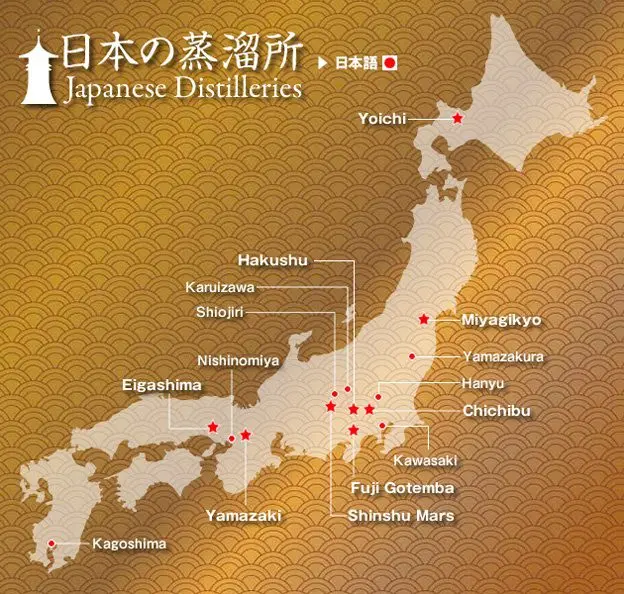Contents
Japanese whiskey is a drink created “in the image and likeness” of scotch: having begun to produce barley distillate, the descendants of the samurai took Scotch whiskey as a model. The result is so good that in blind testing, modern tasters cannot even always distinguish some Japanese varieties from the Scottish original.
Today in Japan there are several manufacturers, but the most popular and well-known companies are Suntory and Nikka. The first owns about 70% of the market, the second – 15%, both brands produce all the main types of drink: blended, grain and single malt whiskey.
History
It all started with a brewery built in the Land of the Rising Sun in 1869 by the Americans. At the end of the XNUMXth century, the Japanese began to be interested in European alcohol, grow barley and adopt brewing technologies from the Germans. Over time, there was so much raw material that there was enough grain not only for beer, but also for distillate.
Japanese whiskey owes a lot to two people: Shinjiro Tori and Masataka Taketsuru. The former was the owner of Kotobukiya (later renamed Suntory) and the latter was an employee. At first, Mr. Tori was engaged in the import of Western alcohol, in particular – Portuguese wines, but then he became interested in whiskey and decided to establish production in his homeland. Shinjiro built the first distillery in the suburbs of Kyoto, since that region is famous for its especially tasty water, on the basis of which the entrepreneur was going to make “Japanese scotch”.
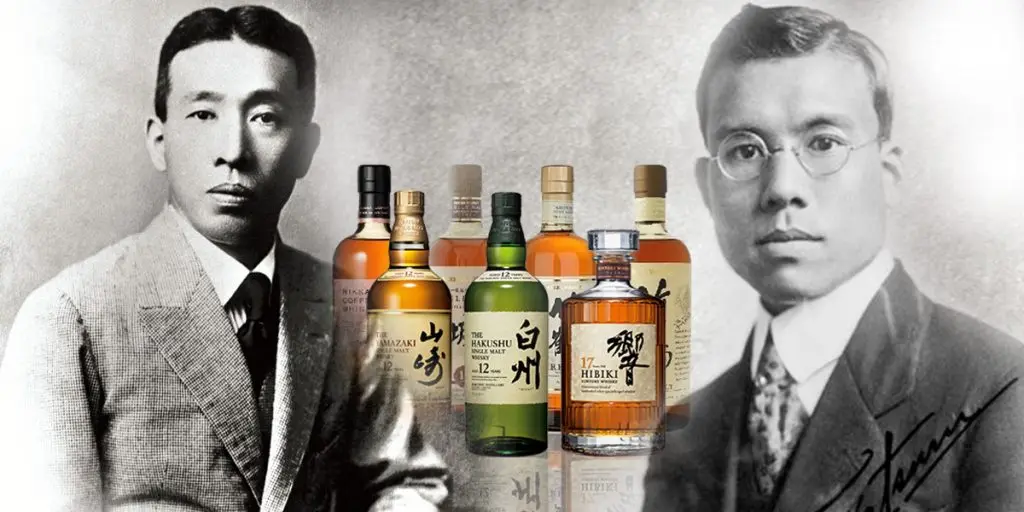
In turn, the young Taketsuru came from a family of sake producers, studied the art of making whiskey in Scotland, where he practiced at the best production facilities. Returning home in the 1920s, he made an invaluable contribution to the popularization of whiskey in Japan. In 1934, Mr. Taketsuru retired from Kotobukiya and founded his own company, Dainipponkaju (today known as Nikka). The production was located near Hokkaido.
The first non-Japanese to taste Japanese whiskey were American soldiers, who in 1918 described the drink as “Scotch made in Japan.”
Production features
Japanese whiskey was conceived as an attempt to completely recreate the Scottish product: pioneers like Taketsuru carefully studied the technology and, step by step, repeated the steps of the Scottish masters. Even the climate and soil type were taken into account – in particular, that is why one of the distilleries was built in Hokkaido.
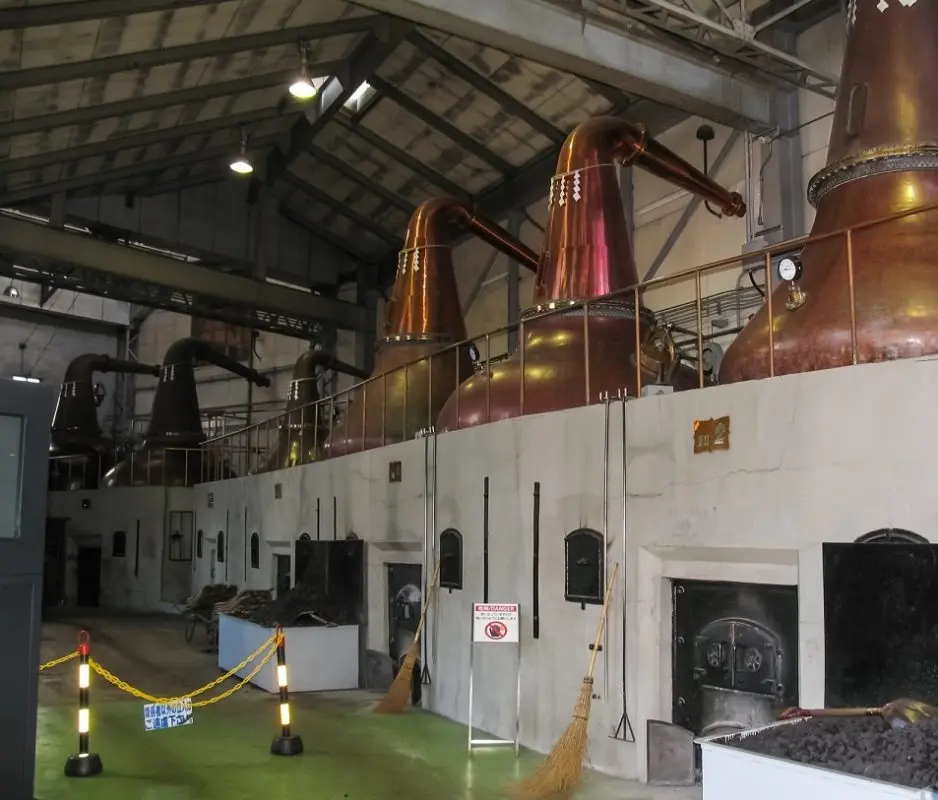
Features of the Eastern mentality and way of life could not but affect the production. While it is customary in Scotland to blend whiskey from different distilleries, in Japan companies only use their own distillates. In extreme cases, the blend may contain original scotch tape – but not the products of a Japanese competitor.
Thanks to this, Japanese manufacturers produce a wide range of flavors and styles: from classic smoky to light floral. As a raw material, not only the classic Optic barley variety is taken, but also Golden Promise, almost forgotten already in Scotland itself. The Japanese still heat the stills over an open fire and age the whiskey in oak sherry casks (although this is not required by local standards, any other oak casks can be used).
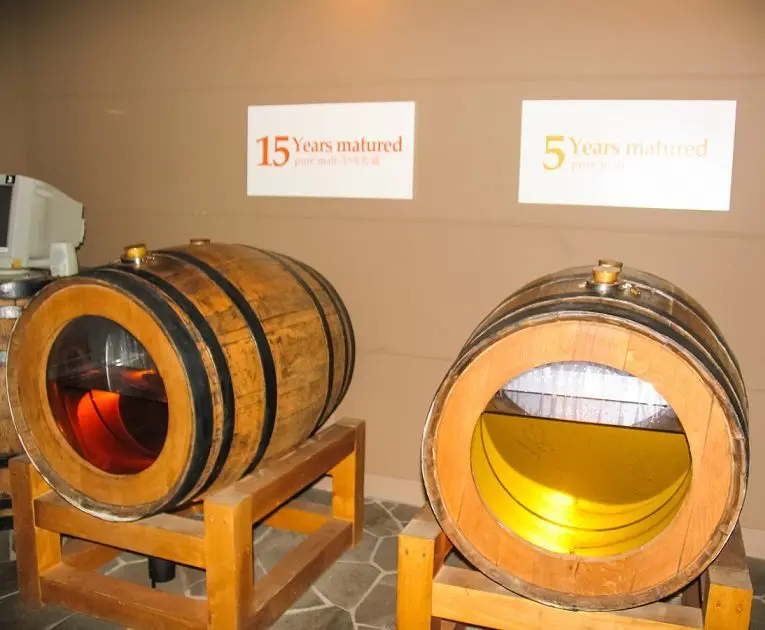
difference between japanese whiskey and scotch
Despite the perfectly copied technology of double distillation in a pot still, Japanese whiskey has a different taste. Causes:
- Water in Japan is softer, contains fewer minerals and impurities.
- The Scots distill the distillate in Coffey stills or distillation columns, and the descendants of the samurai distill in stills of various shapes and sizes, which makes it possible to obtain a wider range of aromas and tastes.
- The Land of the Rising Sun has a completely different climate, which affects all stages of production: from growing grain to aging the drink in barrels.
How to drink Japanese whiskey
Japanese whiskey is drunk in the same way as Scotch whiskey: in its pure form, with ice or water, as part of cocktails. The Japanese do not like harsh tastes, so they often dilute strong distillate with water in a ratio of 1:4 or even more.
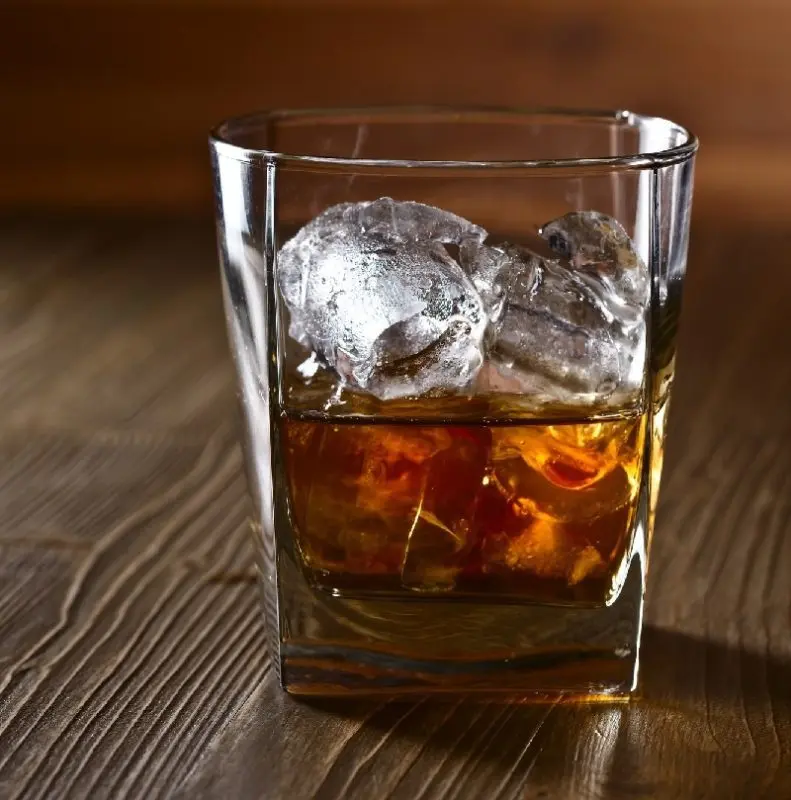
As an appetizer, local dishes are good – sushi, rolls, crab meat, fish. “Peated” varieties with a smoky aroma are served with meat, hard cheese, and ham. Chilled whiskey is often put on the table at dinner and drunk with ordinary dishes.
Japanese whiskey stamps
Major manufacturers:
- Suntory (Yamazaki and Hakushu distilleries).
- Nikka (винокурни Yoichi и Miyagikyo).
- Kirin (Fuji Gotemba).
- Chichibu.
- Shinshu.
- White Oak.
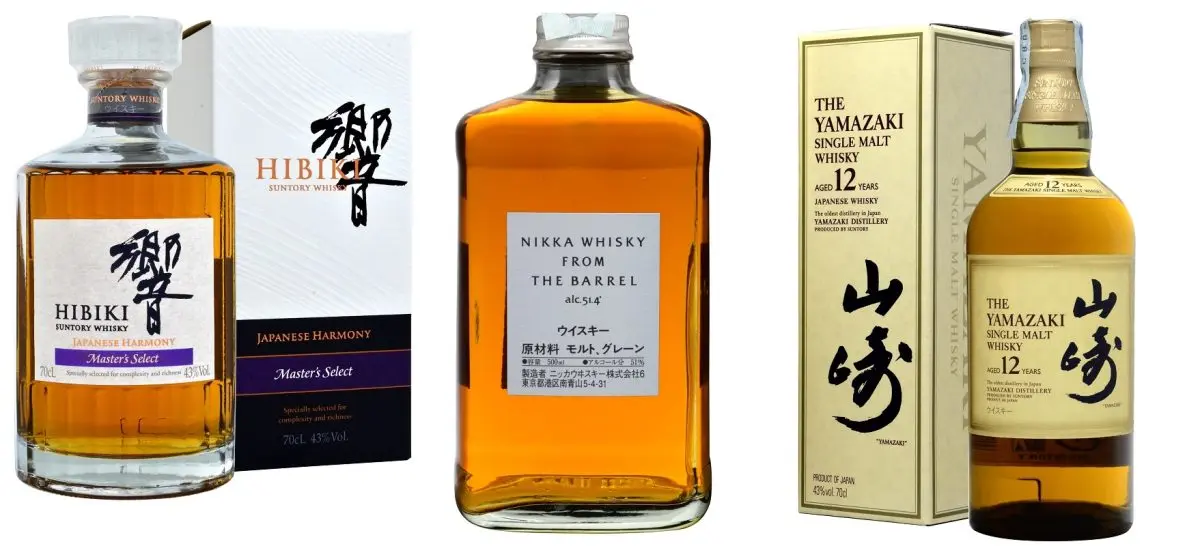
Until 2000, almost all products of Japanese distilleries were supplied to the local market, but in 2001 Yoichi (10-year-old single malt whiskey produced by Nikka) received the highest award from Whiskey Magazine and was recognized as the best in the world, after which several leading brands of the country entered the international market, where they managed to gain a foothold and occupy their niche.
